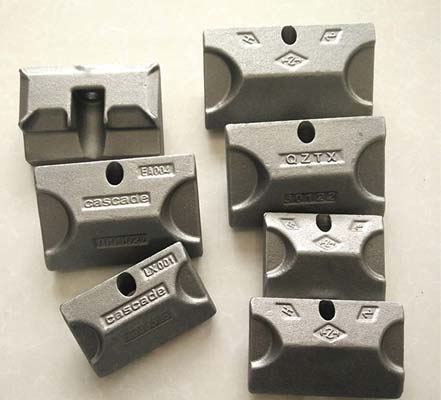- Contact Innally, Let you purchase forgings in China more favorable prices, products more assured!
- Hotline:+(86)15038323776 Email:innally@innally.com
The influence of manufacturing process on quality of forgings of forklift parts
- Category: Thermal forging, Titanium alloy forging
- |
- Date: 04/12/2023
At the same time, continuous monitoring and testing of the manufacturing process is also required to detect and deal with potential quality problems in a timely manner. Only in this way can high-quality forgings of forklift parts be produced to meet the needs of the forklift industry.
Product Details
The manufacturing process of forgings of forklift parts is one of the key factors to determine its quality. Different manufacturing processes will have different effects on the quality of forgings. Below, we will explore in detail the impact of the manufacturing process of forklift parts forgings on quality.
First, the effect of the heating process
In the forging process, heating is a crucial link. The control of heating temperature and time will directly affect the quality and performance of forging. If the heating temperature is too high or the time is too long, it will cause the metal grain to grow, thereby reducing the strength and toughness of the forging. On the contrary, if the heating temperature is too low or the time is too short, the metal will not be able to fully plastic deformation, which may lead to cracks or incomplete shapes in the forging.

Second, the impact of forging pressure
Forging pressure is one of the key factors of forging forming. The proper forging pressure allows the metal to flow sufficiently and fill the mold to obtain the desired shape and size. However, if the forging pressure is too large, it may cause the metal flow line to break, thereby reducing the strength and toughness of the forging. On the other hand, too small forging pressure may lead to inaccurate forging shape or uneven internal organization.
Third, the effect of cooling speed
The cooling rate also has an important effect on the final quality and performance of the forging. Rapid cooling can refine metal grains and improve the strength and hardness of forgings. However, too fast a cooling rate can also cause stresses and cracks in the forgings. Conversely, slow cooling facilitates stress release and homogenization of the structure inside the metal, but may reduce the hardness of the forgings.
Four, the impact of mold design
Die design is another important factor in the forging process. The shape and dimensional accuracy of the die will directly affect the shape and dimensional accuracy of the forging. In addition, the material and heat treatment state of the die will also affect the surface quality and release performance of the forging. Therefore, reasonable die design is the key to ensure the quality of forging.
V. Impact of subsequent treatment
After the forging is completed, it is usually necessary to carry out follow-up treatment, such as heat treatment, mechanical processing, etc. These processes also have an impact on the quality of the forgings. For example, heat treatment can change the internal structure and properties of forgings, while machining can remove surface defects of forgings and improve dimensional accuracy.
In summary, the manufacturing process of forklift parts forgings has many effects on quality. In order to ensure that the quality and performance of the forging meet the requirements, each manufacturing link must be strictly controlled, including heating, forging pressure, cooling speed, mold design and subsequent treatment. At the same time, continuous monitoring and testing of the manufacturing process is also required to detect and deal with potential quality problems in a timely manner. Only in this way can high-quality forgings of forklift parts be produced to meet the needs of the forklift industry.
nannan
INNALLY website editing, to provide you with forging related information
Related Products
Search
Forging center
- Steel forgings
- Aluminium alloy forging
- Titanium alloy forging
- Stainless steel forging
- Copper forging
- Automotive forgings
- Locomotive forging
- Bicycle forgings
- Motorcycle forging
- Rigging and fasteners
- Bearing forging
- Electric power fittings
- Marine forging
- Mechanical forgings for metalworking
- Mining machinery forgings
- Marine engineering forgings
- Construction machinery forgings
Popular product

© 2025. All Rights Reserved.






